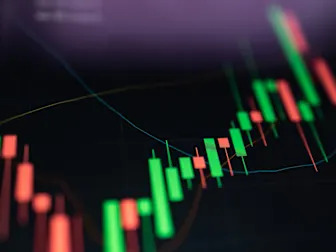Wall Street 2.0: What stablecoins did for the dollar, Ondo is doing to capital markets originally appeared on TheStreet .
The old system still sleeps.
Closes on weekends. Clears trades in days. Moves money in loops and calls it “settlement.” A slow maze of custodians, paper trails, and batch processors dressed up as modern finance. Everyone nods. No one questions the lag.
It’s a scaffold of rules and rituals. Stitched together by inertia, policy, and trust in institutions that forgot how to earn it.
Then stablecoins exposed the whole thing.
They didn’t just digitize the dollar, they outperformed it. Moved faster. Worked harder. Never closed. The result? A $230 billion asset class , foundational to crypto and leaking into TradFi like a quiet virus. A dollar that didn’t need permission.
Nathan Allman, founder and CEO of Ondo Finance saw it early. The Markets aren’t built for a world that never closes.
“The financial system wasn’t designed for the world we live in—it was stitched together over centuries,” he wrote. “It’s a patchwork of middlemen, paper trails, and private databases.”
“We have global investors, 24/7 assets, and programmable money. But the infrastructure they run on is still built around banking hours.”
“That’s the disconnect we’re addressing.”
The asset isn’t new. The rail is.
OUSG isn’t a whitepaper. It’s a pipeline. It wraps short-term U.S. Treasuries into a tokenized instrument that behaves like software. Internet-native yield. Real-time liquidity. Fully composable.
It’s not trying to be flashy. It just works.
This isn’t a concept. It’s already in motion:
- $1.3 billion in Treasuries tokenized between OUSG and USDY
- BlackRock’s BUIDL sits around $2.9b
- Franklin Templeton’s fund holds roughly $752b
The total tokenized RWA market has surpassed $7 billion and it's no longer just theory. It's becoming standard infrastructure.
“Our approach is simple,” Allman says. “Tokenize high-quality, yield-bearing assets. Wrap them in code. Make them programmable. Make them liquid.”
“What we’ve seen with OUSG is that institutions want the yield of Treasuries, but they also want the speed and composability of crypto. We’re giving them both.”
Earlier this month, Ondo integrated PayPal’s PYUSD , bridging Treasuries and a major fiat-backed stablecoin. The result? Investors can now convert between sovereign debt and digital dollars instantly, on-chain.
No wires. No waiting. Just finality.
“Finance is built on conversions,” Allman said in a recent statement. “If you can’t convert between assets instantly, at scale, you don’t have real liquidity—you just have accounting entries.”
From Wall Street to Web3: A new financial stack
The ambition isn’t subtle.
“What stablecoins did for the dollar, Ondo will do for capital markets.”
Not a tagline. A declaration of intent.
Stablecoins cracked one flaw. Dollars couldn’t function online. The rest of finance never caught up—yield markets, settlement logic, compliance theater—all still trapped in a paper-era fantasy of how money’s supposed to move.
Ondo’s rewriting the stack—liquidity without pause, compliance baked into the logic, capital that moves like it forgot friction was ever a thing.
“We’re not trying to create parallel universes,” Allman says. “We’re building bridges—between legacy finance and programmable finance.”
The world is catching on. The World Economic Forum, Citi, and Bank of America all estimate tokenized assets could hit $5–10 trillion by 2030
Ondo isn’t projecting it. Ondo is routing it.
“We’re not here to disrupt,” Allman says. “We’re here to rebuild. The rails. The flow. The logic of how capital moves.”
Ondo isn’t projecting it. Ondo is routing it.”
Rewriting the operating layer
Most people can’t move money without a delay. They can’t see all their assets in one place. They can’t borrow against U.S. Treasuries unless they’re already rich or plugged in.
Meanwhile, the machinery is unmistakably antiquated—batch processes, blind spots, and rails built for a slower world
Wall Street 2.0: What stablecoins did for the dollar, Ondo is doing to capital markets first appeared on TheStreet on May 30, 2025
This story was originally reported by TheStreet on May 30, 2025, where it first appeared.


